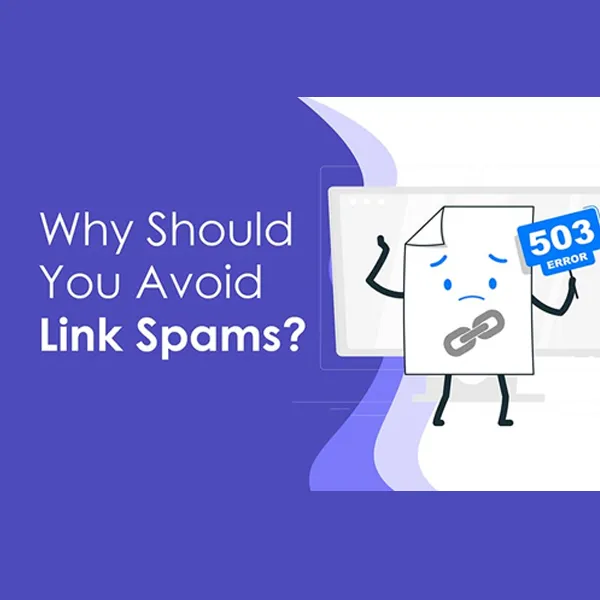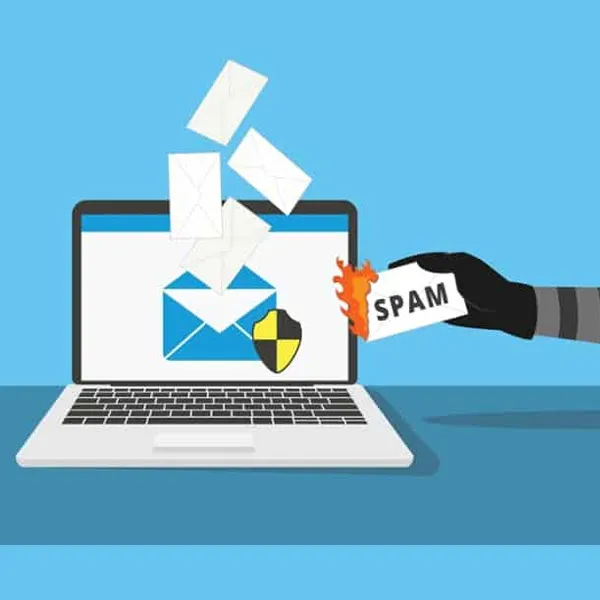What Link Spamming Really Is
Link spamming refers to the black hat practice of embedding and posting the links that you wish to promote. Link spamming pays no regard to the post content, page quality, or established link-building practices.
It involves posting numerous links that don’t even fit in the context of the discussion forums, blog comments, guestbooks, and other places online where user comments are displayed.
Types Of Link Spamming You Should Avoid
Learn to identify link spam and safeguard your digital presence against this rising threat. Take action now and don’t allow link spams to compromise your success! Listed and explained below are the types of link spamming you need to avoid:
– Hidden Links:
Links embedded in a webpage’s code or design, invisible to users but accessible to search engines for manipulative purposes.

– Spam Posting:
Unwanted or irrelevant posts, often repetitive or unsolicited, aimed at promoting products, services, or websites.
– Switch and Link Bait:
A tactic involving luring users to click on a link that leads to different content than expected, often for gaining traffic or attention.
– No Follow Links:
Links that include the “no follow” attribute, indicate to search engines not to follow or pass on ranking authority to the linked website.
– Single Post Blogs:
Blogs that consist of a single blog post, lacking substantial content or regular updates.
– Link Farms:
Networks of websites created solely for generating excessive backlinks, typically low-quality and irrelevant, aimed at manipulating search engine rankings.
– Paid Links in Content:
Links acquired through monetary transactions, placed within the content of a webpage for promotional purposes.
– Cleansing Domains:
The process of identifying and removing harmful or spammy backlinks from a domain to improve its search engine rankings.
– Low-quality PR Syndication:
Distributing press releases to low-quality or irrelevant platforms for the purpose of gaining backlinks, without providing significant news value.

The Risks That Link Spam Pose
Features on blogging platforms and websites like the MT-Blacklist plugin, assist in combatting link spam. Link spamming can cause harm to your site traffic and ranking. Moreover, your website might not show up in the search results.
Common ways to prevent comment spam include blacklists and manual approval of banned words.
Possible Solutions For Link Spam
You can protect your website against the dangers of link spam in four easy steps. These steps aim to combat link spam and ensure a healthier backlink profile. The steps are as follows:
Step 1:
Identify and avoid various types of link spam, such as penalized domain links, links from link farms and directories, “bad neighborhood” links,

irrelevant language links, unrelated links from different websites, and exact match anchor text links.
Step 2:
Determine the source of spam links using tools that allow data export. This helps in identifying websites to contact for link removal.
Step 3:
Request removal of spam links, although the success rate may be low. Look for contact information on the website or use WHOIS lookup to gather information. If unsuccessful, contact the website’s hosting company for assistance.
Step 4:
Create a disavow file and submit it to Google Search Console. This file contains the links you want Google to disregard. Carefully review the backlink profile to avoid disallowing authoritative backlinks and harming organic ranking. The disavow file will be processed, and gradual restoration of classification will occur.
Expected Changes In The Spam Algorithm:
In the coming weeks, Google is expected to implement a new spam algorithm to combat link spam across multiple languages. While Google won’t penalize sites for spammy links, they will be ignored or nullified, potentially affecting rankings.
Conclusion
It is crucial to focus on organic content and traffic to avoid negative consequences. Engaging in black hat SEO practices, including spam links, is not recommended due to the risks and wasted time. It’s better to prioritize ethical and white-hat SEO strategies to ensure long-term success and avoid potential penalties.
For further questions and assistance regarding your digital presence, you can get a free consultation with our experts at VDigitalX Marketing.
FAQs:
What is link spamming?
Link spamming is a black-hat practice that involves posting irrelevant links in comments, forums, and other online communities and platforms. Ignoring content quality and established link-building practices, it solely aims to promote specific links.
What are the risks that link spam poses?
Link spam can threaten your website’s traffic and ranking, leading to a potential exclusion from search results. You can mitigate comment spam with protective measures like manual comment approval and blacklists.
What are the kinds of link spamming that I should avoid?
Avoid spam posting, hidden links, no follow links, switch and link bait, link farms, single post blogs, low-quality PR syndication, paid links in content, and cleansing domains.
What possible solutions are there for combatting link spam?
You can combat and avoid various types of link spam in 4 easy steps: identify spam link source, request removal, create a disavow file, and submit the disavow file to Google Search Console.
What changes can we expect to see in the spam algorithm?
Google has planned to combat link spam with a new spam algorithm. While Google may ignore or nullify the spammy links, indirect penalties will still be imposed by Google i.e., impact on the rankings.

